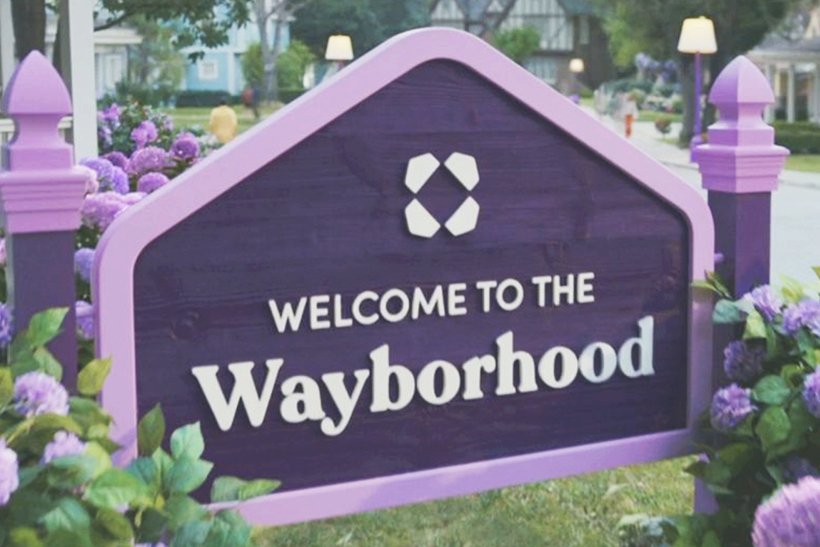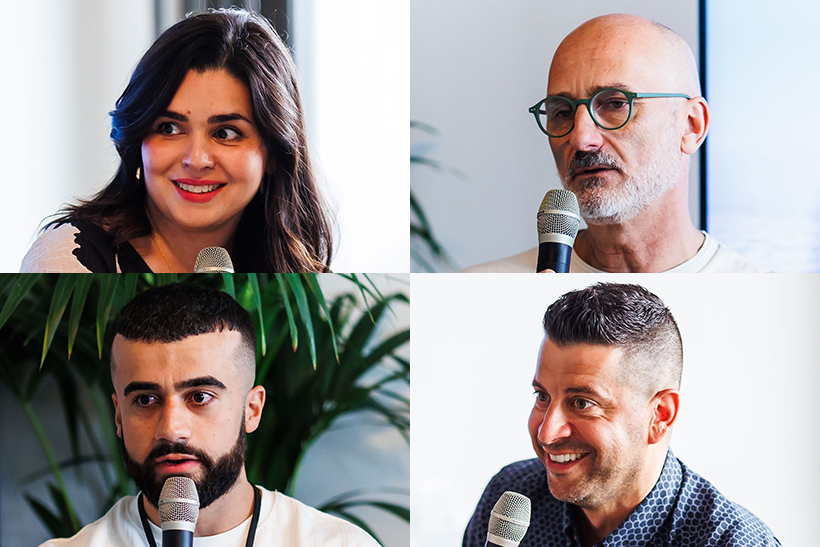Participants
- Chebbo, creator on TikTok
- Sandro Corsaro, head of global creative, Wayfair
- Umbar Shakir, Partner, Gate One
- Robert Jan van Dormael, VP, marketing consumer audio EMEA & Asia, HARMAN International
- Alison Weissbrot, editor-in-chief, Campaign US (moderator)
In the past, consumers desired products that signaled status and showcased their identities, backgrounds, and beliefs. Now consumers are increasingly prioritizing authenticity, purpose, and genuineness over aspirational goals in messaging. Yet communicating those attributes can be a challenge for brands in a fragmented media environment.
This Havas-sponsored discussion at Cannes — “Today’s Consumer is Redefining the Status Symbols of Tomorrow” — focused on how brands can forge a meaningful connection with consumers in this progressively fragmented and noisy marketplace.
Gate One’s Umbar Shakir believes there’s been a cultural shift away from a materialistic to an experiential economy, and eventually, a purpose economy.
“The value exchange between the consumer and the brand is really important,” she explained. “You can't get that unless you know who you are as a brand, know your customer, and how you want to engage with them.”
And when it comes to engagement, data and analytics are enabling all sorts of new opportunities.
“The way you can analyze and drive personalization on social media platforms really matters,” suggested Shakir. “We are getting a feedback loop so we can make the right evolutions and set changes for our business.”
Part of the community
Increasingly, brands are tapping into micro-communities and influencer/creator cultures and platforms to deliver tailored consumer experiences.
“While in the past, media was one-way traffic, it has become a platform where you can actually engage with your target audience,” said HARMAN International’s Robert Jan van Dormael. “Through microcultures, we've done so on several levels.”
The impact is being seen on audiences large and small. He explained how he worked with audio brand JBL to tap DJ and producer Martin Garrix as global brand ambassador, connecting Garrix’s listeners from around the world to the brand.
He added that it’s important for international brands to partner with influencers in different parts of the world “to help with local interviews in their own language and to ensure cultural authenticity.”
Wayfair’s Sandro Corsaro highlighted the brand’s recent "Welcome to the Wayborhood" onmi-channel campaign, which celebrates consumers’ view of their homes as a form of self-expression. A transformative campaign for the brand, they created a new tagline, logo, and jingle (and even a new physical storefront) to celebrate the refresh and engage with evolving customers.
In addition to the celebrity spokespeople associated with the campaign, Wayfair included TikTik creator Thoren Bradley, who gave the effort an unexpected “extra boost,” explained Corsaro.
It’s just one example of how micro-community connections loom large.
“I’ve seen a huge shift from Michael Jordan and Nike to influencers,” he noted. That connection to their followers is “a tribal thing.”
Tribal is where you want to be.

Know your purpose
Panelists stressed the importance of establishing a clear brand purpose and identity before entering micro-communities to avoid conversations that conflict with that purpose.
“It’s important to know why you're doing something and what business problem you are trying to solve, rather than being led by the hype of technology,” added Shakir.
Creation of a brand is important, but maintaining consistency is a separate battle. Van Dormael reminded marketers to remain true to the brand.
“A brand can reinvent itself once in a while,” he offered, “but it’s important to stay true to yourself. Not every brand does that.”
The experts on the panel emphasized the value of allowing influencer partners the freedom to experiment.
“Microcultures need micro-experiment,” said Shakir. “Fail fast and learn quickly is what influencers do.”
To validate that point, this panel featured such as influencer in Chebbo, TikTok creator.
“We're always testing on posts,” he shared. “I'm still learning every single day. The landscape changes. People's attention shifts.”
Chebbo noted that creativity, flexibility and collaboration create the best environment for successful partnerships.
“There’s a lot of responsibility on me as a creator to be authentic to my audience,” he continued. “I’m showing up on their page alongside their favorite creator and micro-creator and rivaling those people for attention, so there’s an opportunity to double down and make sure I’m aligned on what I’m giving them.”
While there’s much to gain from partnering with an influencer, there’s undeniably risk involved. Panelists discussed how they assess the rewards and the risks of these partnerships.
“We do pretty extensive deep dives on the agency side and internally,” noted Corsaro, who emphasized the importance of having a live conversation with any creator with whom you want to partner. “We scroll all the way back to the first post to make sure we know what we’re getting into.”










